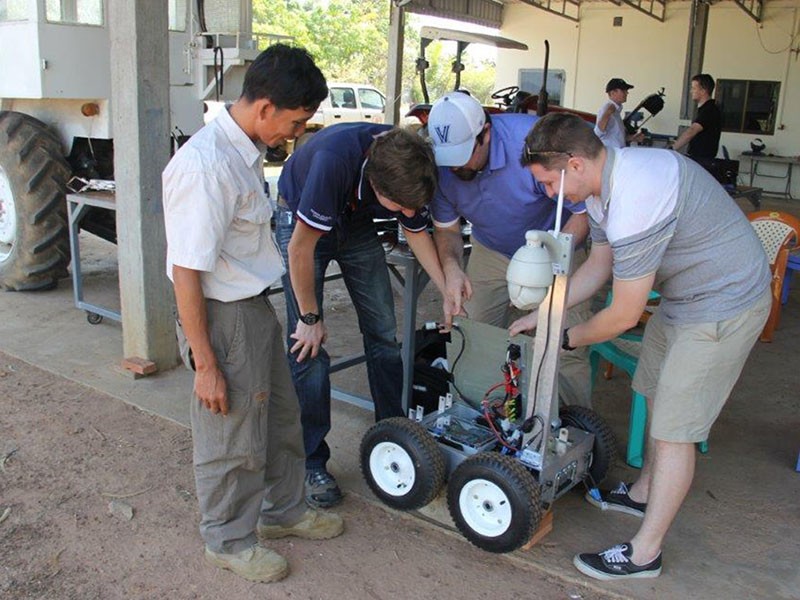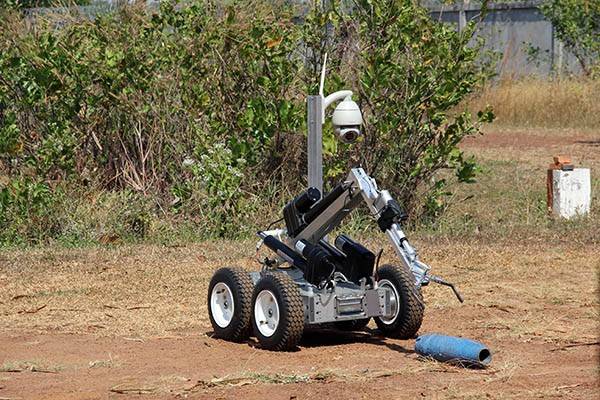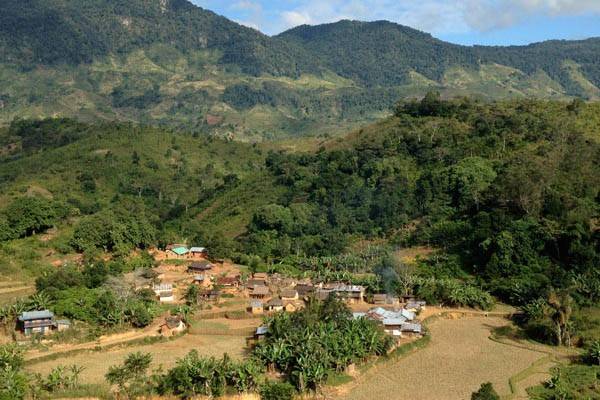INTERNATIONAL SERVICE PROJECT - CAMBODIA


Background
US bombings during the Vietnam War and defense against the Khmer Rouge during the Cambodian genocide have left Cambodia with unexploded ordnance (UXO) throughout the country. Estimates report that more than 4500 square kilometers are contaminated with explosive remnants of war, which have caused more than 64,000 deaths, injuries or disabilities and stifled economic growth as expansion of farms and other livelihood activities is impeded.
Developing world explosive ordnance disposal (EOD) technicians often do not have access to expensive, military-grade EOD robots, which puts them in higher risk situations than their developed world counterparts. Thus, there is a need for a lower-cost EOD robot solution.
Objective
In partnership with the Golden West Humanitarian Foundation (GWHF), Villanova Engineering faculty and students, led by Associate Professor of Mechanical Engineering Dr. Garrett Clayton, designed and built a low-cost humanitarian explosive ordnance disposal robot for low-income countries like Cambodia. The goal was to achieve 90% of the functionality of military-grade robots at 10% of the cost. The specs included:
- Intended sale price below $10,000
- Components must be either locally available or suitable for mass ordering
- The robot must be movable by two people, weigh 100 lbs. or less, and be transportable in a pickup truck
- Remote operability and an ability to navigate rough terrain
Project Status
Since the beginning of Villanova’s collaboration with GWHF, more than 60 students have participated through senior design projects, summer internships and fellowships, undergraduate research, master’s theses, PhD dissertations, and volunteer work. More than 20 of them have traveled to Cambodia for field work (some for as long as two months).
To date, a prototype has been developed and GWHF is investigating how to commercialize the product.
Background
In typical EOD missions, classification of unexploded ordnance is of critical importance as it dictates how the EOD technician will approach the situation. High-confidence classification requires an expert with a great deal of training and experience. This expertise is not always available in low-income countries, so this project seeks to aid EOD technicians in the ordnance classification process.
Objective
Using machine learning, Dr. C. “Nat” Nataraj, professor of Mechanical Engineering and director of the Villanova Center for the Analytics of Dynamic Systems, is developing an automated ordnance classification system to aid EOD technicians. The technician will take a picture of a piece of ordnance from which the system will return potential ordnance matches using a ConvNet classifier.
While these techniques are well established in machine learning, the availability of ordnance image datasets is limited or non-existent. Thus, the first step in this project was to acquire such a dataset.
Project Status
The database currently has more than 250 different types of ordnance and preliminary results have been promising. Current work is focused on expanding the image database, testing the methods on additional types of ordnance, and enabling the classification of partially-occluded ordnance and ordnance in field conditions.
Villanova Engineers Bring STEM Education to Cambodia
Background
Since 2012, the College of Engineering has sent student and faculty teams to the remote Ratanakiri region where they have worked with the Caramanico Foundation to provide local children with access to a quality education. Established by Anne and Tom Caramanico PE, CE ’71, MSCE ’83, the Caramanico School school serves 230 students in seventh through ninth grades. Over the years, Villanova Engineering students and faculty have been instrumental in the design and building of the campus’ preschool and kindergarten.
Since 2015, Villanova students have developed and led a series of science and engineering workshops for the school’s eighth- and ninth-graders. As a result, Cambodia’s National Ministry of Education formally accepted Villanova’s science, technology, engineering and math (STEM) curriculum in 2016 and has asked Villanova engineers to continue their work by:
- Growing interest in STEM-related fields by leading fun projects including air propelled rockets, raft making, catapult building, water sample testing, and more
- Awarding project winners with the opportunity to attend the country-wide STEM competition in Phnom Penh
- Creating a STEM training program for teachers
- Using feedback to improve the curriculum and training program





